- October 22, 2014
Share
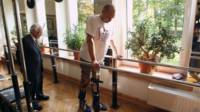
For the first time doctors were able to restore the ability to walk a man paralyzed by a spinal injury. In his spinal cord cells were transplanted olfactory nerve tissue.
40-year-old Polish Darek Fidyka, who in 2010 as a result of stab wounds was paralyzed from the waist down, is now able to move around, leaning on a walker.
This operation is the first in the world, was made by surgeons in Poland in collaboration with London-based scientists.
The article on this was published in the medical journal Cell Transplantation.
Sensational success
Professor Jeff Reisman, head of the Institute of Neurology neuroregeneration at University College London, leads a team of British researchers.
According to him, the result achieved is more significant for its consequences than landing a man on the moon.
The operation was used bipolar olfactory cell receptors, which are part of the olfactory system.
These cells are used to transmit signals along nerve fibers.
In the first step of the two surgeons removed one of the olfactory bulb of the patient and grown culture cells in the laboratory.
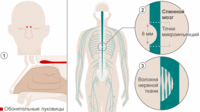
Two weeks later, they transplanted these cells into nerve fibers of the spinal cord of the patient, which had been cut with a knife during the attack. The doctors were only 500,000 such cells that quite a bit.
About a hundred microinjection solution cells were made above and below the injury site.
The four thin strips of nervous tissue were taken from the ankle patient and placed along the fracture in the nerve fibers of the spinal cord width of 8 mm.
Scientists believe that the olfactory cells create the way in which nerve fibers are above and below the injury site can connect with each other, using the bridge of transplanted neural tissue.
Before surgery Darek Fidyka was paralyzed for almost two years and showed no signs of recovery, despite months of intensive physiotherapy.
Signs Success
This intensive program of physiotherapy, in which he was engaged for five hours, five days a week, continued after the surgery at the Center for Rehabilitation aksononeyrologicheskoy in Wroclaw.
Fidyka noticed the first signs of success after treatment three months.
Six months after surgery, he was able to make a few faltering steps, holding onto the railing, using the support of a physiotherapist and special tires for the feet.
Two years after surgery, he can walk, leaning on a walker.
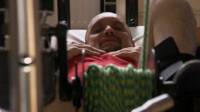
He also partly recovered sensation in the bladder and bowel, and sexual function.
Dr. Pavel Tabakov, chief neurosurgeon at the Wroclaw University Hospital, who led the group of Polish scientists said, that the regeneration of nerve fibers of the spinal cord, which has always been considered impossible, became reality.
These studies were funded by the Fund and the operation of spinal injuries Nicholls (NSIF) and the UK Stem Cell Foundation (UKSCF).
The latter was established in 2007 to promote the use of promising stem cell research, he singled out for the treatment of Polish patients 2.5 million pounds.
Nicholls Foundation was created by the chef David Nicholls after his son Daniel was paralyzed 2003 after an accident in the pool.
The bridge of nerve tissue
The decisive factor in the success of the treatment was the use of the patient’s own olfactory cells, which excluded the possibility immune rejection and the need for drugs to suppress such reaction.
On the left side of the spinal cord resulting from injury blade a gap in the nerve fibers of a width of 8 mm. It is on this side of the doctors have created a bridge of neural tissue transplanted.
A few months later on the left leg of the patient began to increase in the amount of muscle and the first signs of innervation.
Scientists believe that this evidence of regeneration of nerve tissue of the spinal cord, as the signals from the brain that controls the work of the muscles of the left leg is sent to the left side of the trunk of the spinal cord.
Magnetic resonance imaging also found that the gap in the nerve fibers was closed after the operation.
The complex nerve cells responsible for the sense of smell, are only part of the human nervous system, which is regenerated throughout life.
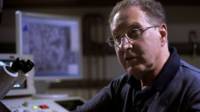
With every breath molecules of different substances in the air come into contact with the nerve receptors in the nose.
They transmit electrochemical signals the olfactory bulb, which are at the top of the nasal cavity at the base of the brain.
These cells constantly wear out and must be replaced. The process of regeneration is provided overlying the olfactory cells (OEC), which provide a basis for the recovery of the fibers of the nervous tissue.
One of the British surgeons specializing in spinal cord injury and who treated thousands of patients in Britain, said that waiting for something -That such for 40 years.
Scientists and doctors who participated in this study, would not want to have thousands of people have any false hopes. They emphasize that their success will be repeated in order to demonstrate the reality of regeneration of nerve tissue of the spinal cord.
Hope for funding
They hope to spend at least 10 similar operations in Poland and the UK in the coming years, although it depends on the scale of financing these activities.
“Our group in Poland is ready to consider the possibility of treatment suitable for this surgery patients from all over the world. These are patients which as a result of a knife wound cut through the trunk of the spinal cord, “- said Dr. Tabakov.
Professor Reisman has spent over 40 years studying the problem of regeneration of nerve tissue.
In his studies on laboratory animals it demonstrated that cells OEC, introduced in rat spinal cord, can arrest the paralysis.
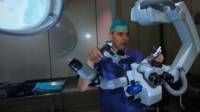
In 2005, Polish neurosurgeon turned Raysmanu Pavlo Tabakov, who previously started tests of this treatment in humans.
Dr. Tabakov conducted the initial clinical trials of three paralyzed patients, giving injections OEC cells into the damaged nerve fibers of the spinal cord.
Despite the fact that none of them was a noticeable improvement, the main objective of the study was achieved – it was proved that the method is safe.
No comments:
Post a Comment